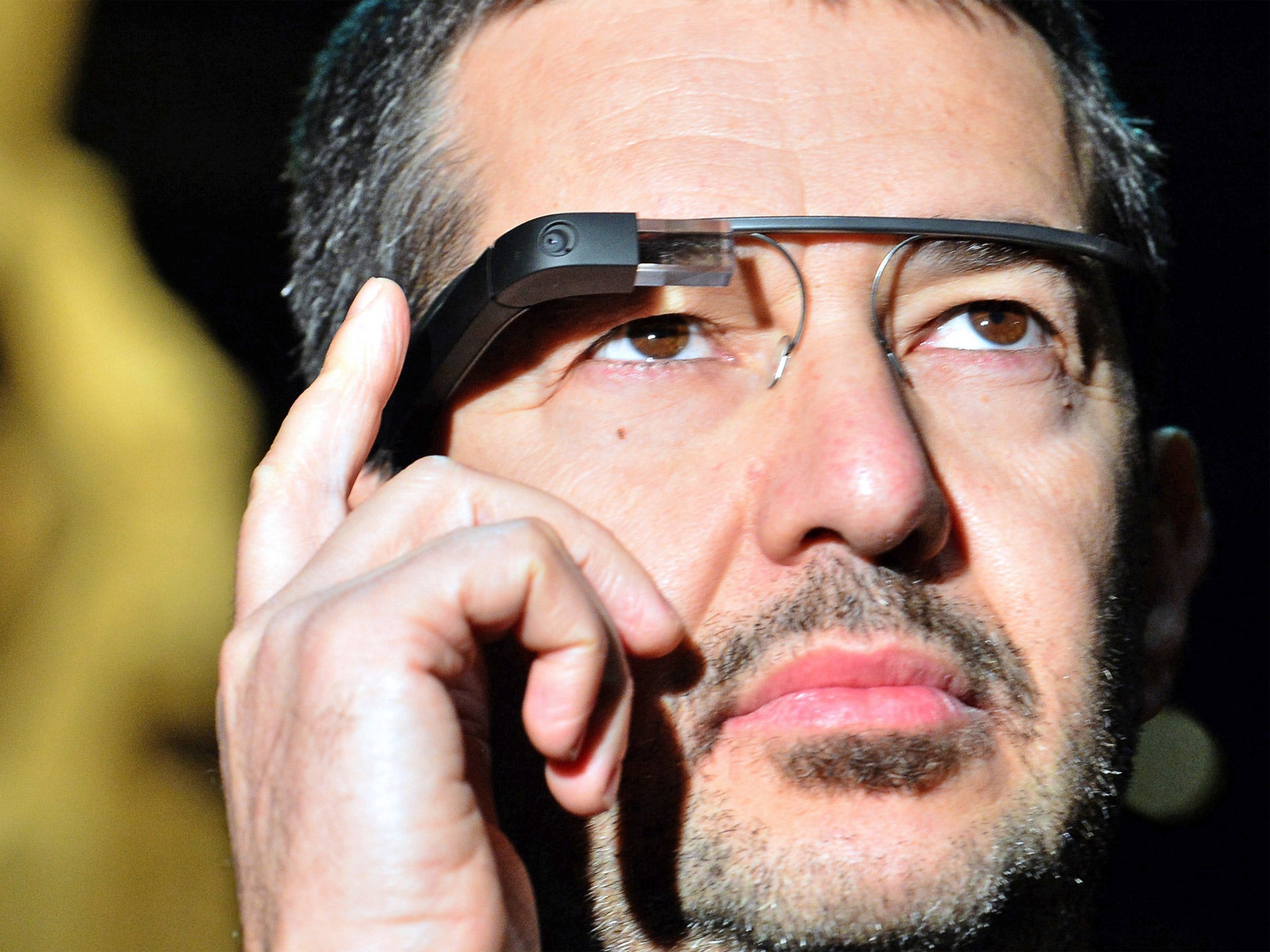A pain in the Glass? Google warns its wearable device may cause headaches if used for long periods
Experts say the pain is probably occurring because the Glass display is in the least comfortable area of a humans field of vision

Your support helps us to tell the story
From reproductive rights to climate change to Big Tech, The Independent is on the ground when the story is developing. Whether it's investigating the financials of Elon Musk's pro-Trump PAC or producing our latest documentary, 'The A Word', which shines a light on the American women fighting for reproductive rights, we know how important it is to parse out the facts from the messaging.
At such a critical moment in US history, we need reporters on the ground. Your donation allows us to keep sending journalists to speak to both sides of the story.
The Independent is trusted by Americans across the entire political spectrum. And unlike many other quality news outlets, we choose not to lock Americans out of our reporting and analysis with paywalls. We believe quality journalism should be available to everyone, paid for by those who can afford it.
Your support makes all the difference.Google has warned that its wearable Glass device may cause headaches if used for long periods, following complaints from several users who said they experienced pain while wearing the high-tech specs. The issue is thought to be related to the location of the headset's display, a tiny screen in the top right of a wearer's field of vision. The firm recently rolled out the $1,500 (£900) device for sale to the public, after it was offered to 8,000 early adopters known as “Explorers” last year.
Two reporters for the website Betabeat experienced headaches during demonstrations of the device, while other users have taken to Twitter to complain of similar discomfort. One early evangelist for Glass, technology PR man Chris Barrett, recently told CNet that he had stopped using the device almost entirely after suffering headaches.
“The first headache came during the first week of wearing Glass. I was wearing Glass every day, all day long; I would wear it to Starbucks; I would wear it to the mall; I would wear it driving, and I would wear it at my office,” Mr Barrett said. “After a few hours of use, my head started to pound. I don't usually get headaches.”
Experts say the pain is probably occurring because the Glass display is in the least comfortable area of humans' field of vision. In early prototypes, Google reportedly tried putting the screen in front of the eye and below it, but found that both obstructed the wearer's line of sight. However, most people are unaccustomed to looking up and to the side for long periods of time, which means overusing Glass may cause a strain to the average eye.
Harvard University optometrist Dr Eli Peli acted as a consultant to Google during the development of the device. He told Betabeat: “The only people who look up a lot are some professionals like electricians and painters. Most of us look either straight or down. It's well known that up is less comfortable.”
Google insists that only a small number of Glass Explorers have complained of headaches, and an FAQ on the Glass website warns, “Like when wearing glasses, some people may feel eye strain or get a headache.” In a statement, the firm added: “Glass is designed for micro-interactions, not for staring into the screen, watching Friday night movie marathons or reading War and Peace.”
Dr Peli said that while Glass is intended for brief tasks such as taking a picture or checking directions, new users spend a long time tinkering with the settings and apps on their device, which may lead to ocular discomfort. As wearers start to use the device as originally intended, and their eye muscles grow accustomed to looking in new directions, the pain will likely disappear. “The recommendation is to not overdo it when you start,” Dr Peli said. “Use it in the recommended way right from the beginning.”
Join our commenting forum
Join thought-provoking conversations, follow other Independent readers and see their replies
Comments